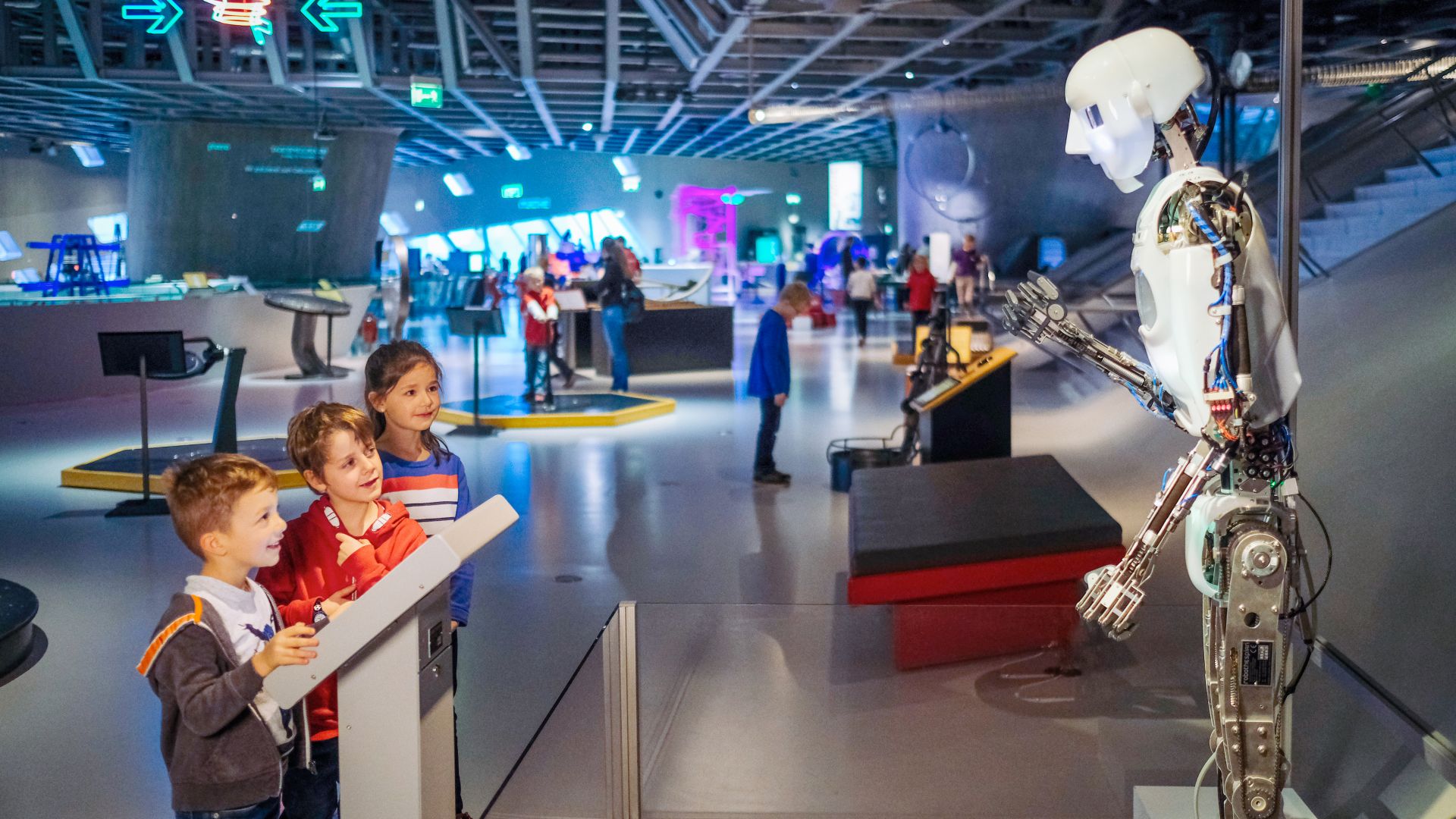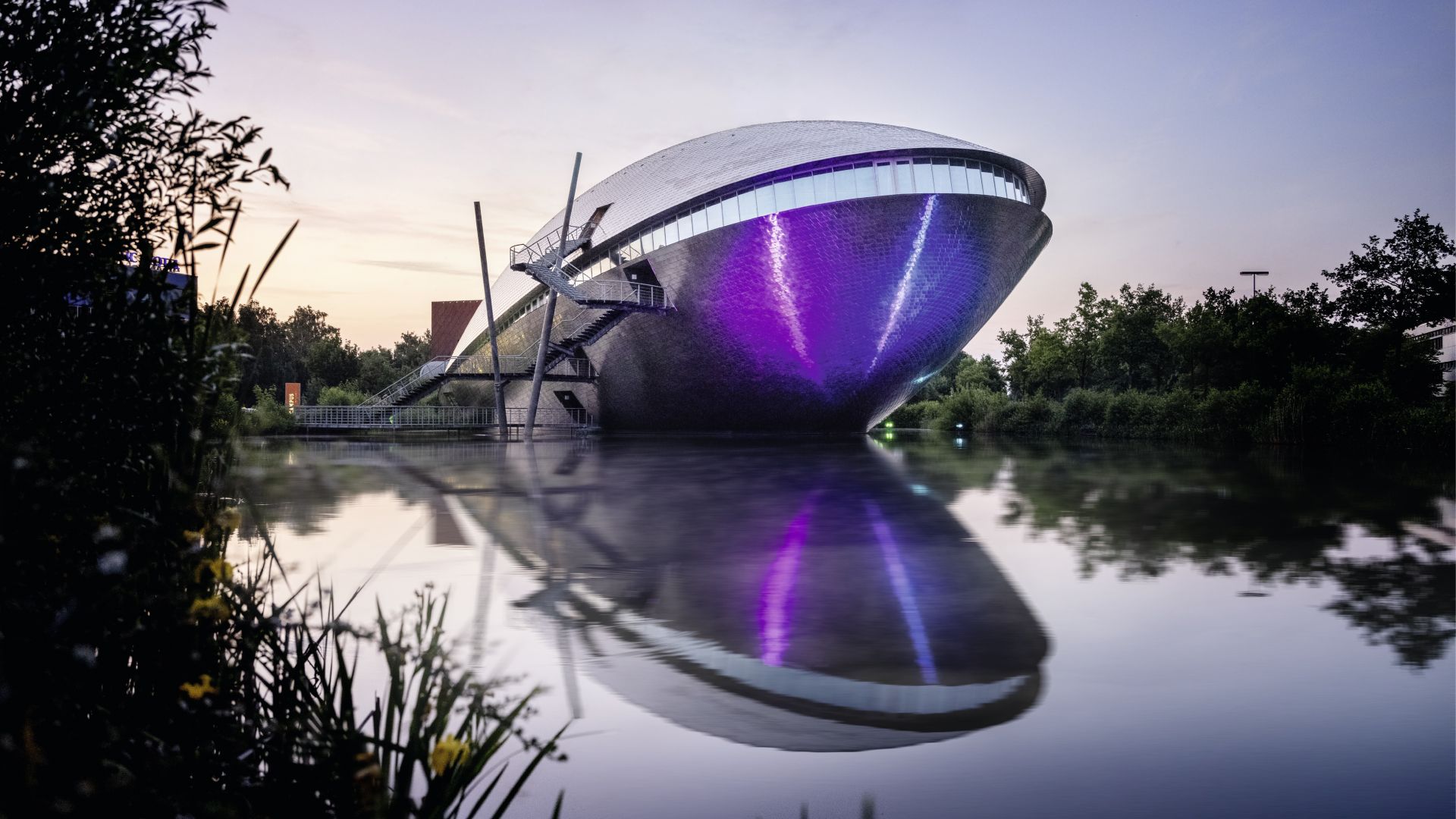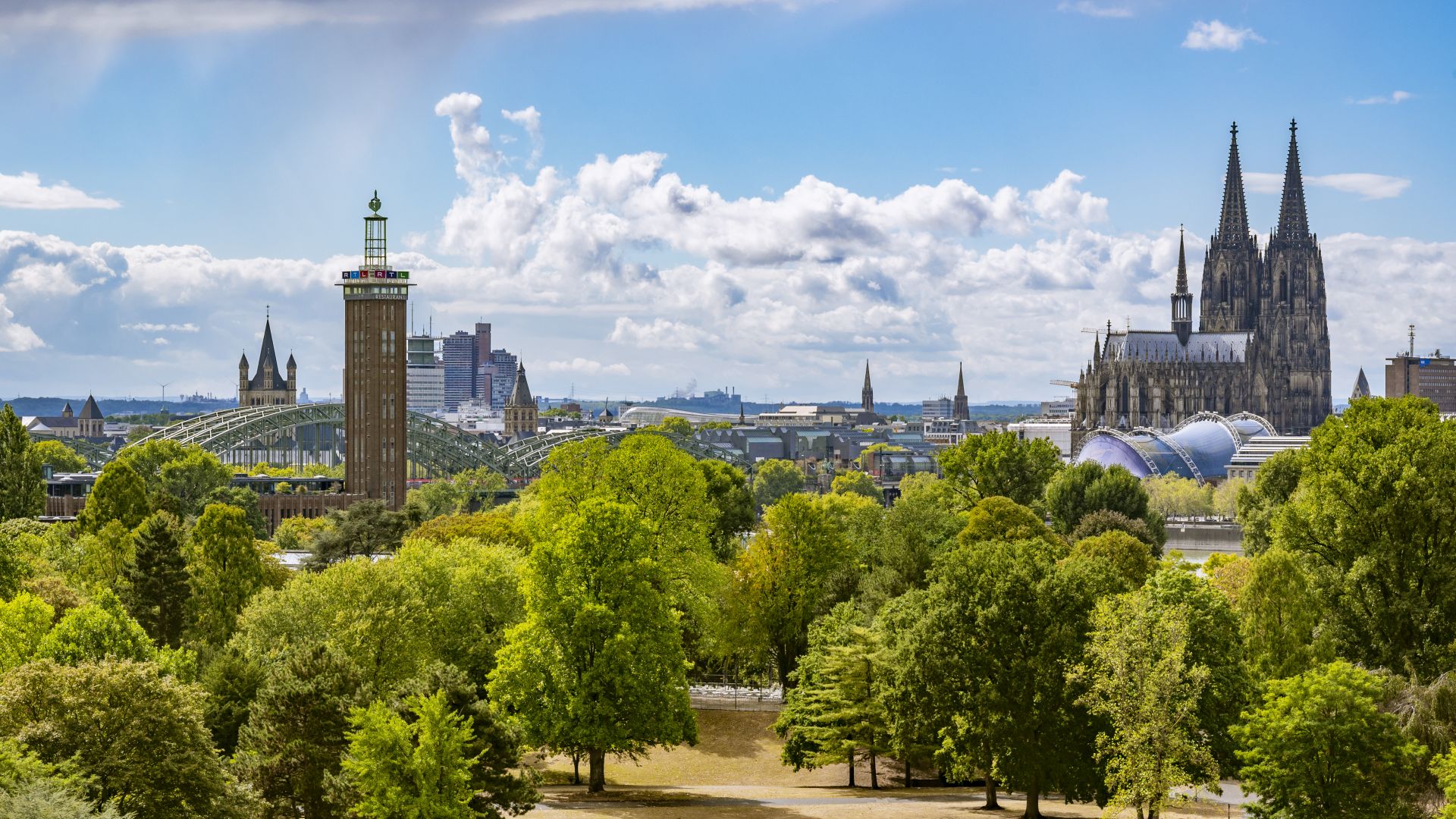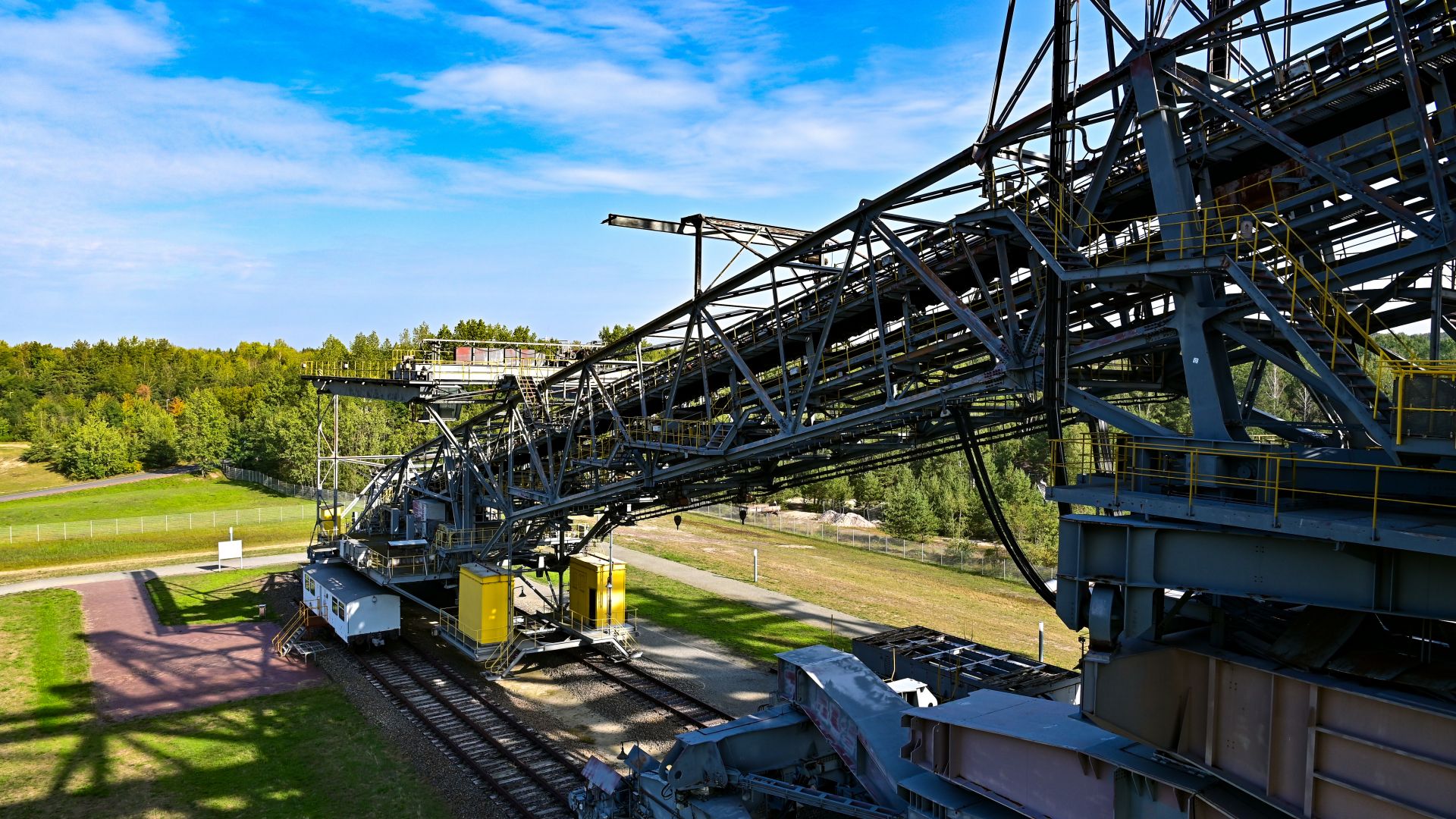Cities & Culture
Science Centres: Learning Through Play
Interaction instead of passive consumption, personal experiments instead of showcases and informational panels – that's the concept of science centers. Metre-high fire tornadoes and shadow plays with bizarre results are fun, and not just for kids.
Phæno Wolfsburg: Edutainment on All Levels
 Wolfsburg: Robot talks to guests at the Phaeno science museum
©Phaeno (Janina Snatzke)
Wolfsburg: Robot talks to guests at the Phaeno science museum
©Phaeno (Janina Snatzke)
Since 2005, Europe’s wildest experimental hall has stood on the outskirts of the “Autostadt” Wolfsburg. At 9,000 square metres, the Phæno is unquestionably Germany's largest science center. While architecture fans linger outside to admire the concrete and steel building - designed by star architect Zaha Hadid - a structure that The UK Guardian considers one of the twelve most significant modern buildings in the world - most of the predominantly youthful visitors have already rushed inside. No wonder, as the landscape, adorned with craters, terraces, plateaus, and cave formations, is dotted with around 350 experimental stations, loosely distributed and partially designed by artists, inviting everyone to push buttons and try things out. Phenomena like fog and cloud formation, magnetism, gravity, light and shadow, electricity, and sound can be experienced through personal experimentation. The robot actor “Robo” is particularly popular, as well as the dramatic mirror exhibits and the “witch’s house”. By the way, for those who are truly captivated – for instance, by the world's largest fire tornado at over six meters tall – their thirst for knowledge can also be quenched in several interactive laboratories.
Universum Bremen: The Cosmos in a Giant Clam
 Bremen: Science Center Universum
©Universum Bremen
Bremen: Science Center Universum
©Universum Bremen
Does chocolate really make you happy? What is a camera obscura? Answers to these questions can be found at the Universum Bremen. Above all, it answers the question of what a cool museum in the 21st century looks like. The Science Center, reopened in 2015 with a completely revamped concept, delights visitors of all ages from far and wide – thanks to its architecture that resembles the silvery fusion of a whale and a giant clam. Here, 40,000 stainless steel shingles create dazzling effects, even at night The interior is also extremely impressive, where visitors journey thematically from the Earth's core to its surface and into space, or even into a walk-in womb, encountering approximately 300 interactive stations along the way, showcasing topics of humankind, Earth and the cosmos. In the earthquake room, for example, the walls shake at the touch of a button and elsewhere shadows are captured on white surfaces. In the 5,000-square metre outdoor space, the "Explorer Park," visitors are inspired by even more interactive stations on the themes of movement, and unusual landscape features. The 27-metre high, self-twisting, walkable “Turm der Lüfte” - Tower of the Skies - towers above everything.
Odysseum Cologne: Education? Entertainment? Sport? All of the above!
 Cologne: city panorama with Cologne Cathedral
©DZT (Udo Bernhart)
Cologne: city panorama with Cologne Cathedral
©DZT (Udo Bernhart)
New owner, new concept, new attractions: After lengthy discussions about whether the Odysseum, located on the grounds of a former chemical factory, could continue to exist, the Odysseum made its comeback in 2021. The time is now for this "Adventure Museum": less school knowledge, more fun and games, more indoor playgrounds and a larger audience, including preschoolers and grandparents. The award-winning “SisyFox” play platform is one of the new attractions, joining several visually and spatially revamped exhibitions, such as the "Mouse Museum", a homage to the beloved children’s show, and the “Roll and Move” roller skating arena, as well as a black light play area and a huge space for puzzle building. What’s special about SisyFox is that the controller is a medicine-ball-sized sphere that requires players to exert a significant effort to get it to move. Other stations, such as the virtual world of the Spree Arena and the 3D Street Art Gallery, require more technical understanding, as they combine analogue and digital experiences.
F60 Visitor Mine: Truly a Massive Structure!
 Lichterfeld-Schacksdorf: F60 conveyor bridge visitor mine
©Adobe Stock (GrebnerFotografie)
Lichterfeld-Schacksdorf: F60 conveyor bridge visitor mine
©Adobe Stock (GrebnerFotografie)
It weighs 11,000 tonnes and is 80 metres high, 204 metres wide and half a kilometre long. In the south of Brandenburg lies a genuine giant, nicknamed "Lying Eiffel Tower of Lusatia". Even though the world's largest mobile machine hasn't budged since 1992, it continues to move countless visitors. The former overburden conveyor bridge F60, located at the Bergheider See southeast of Finsterwalde, offers intriguing insights into the history of lignite mining and breathtaking panoramic views over the Lusatian Lake District. It's impressive when some guides recount their time as mining workers. To fully appreciate the view, which on clear days stretches as far as Saxon Switzerland, visitors should leave the approximately 1.3-kilometer circular path and climb up to the observation cabin at a height of 74 meters. It’s worth the effort - and it's perfectly safe. Even for the adrenaline junkies who prefer to abseil instead of walking back down! Equally spectacular, but not as physically demanding, are special events like concerts or night tours where artist H.P. Kuhn's light and sound installations bring the F60 to life.